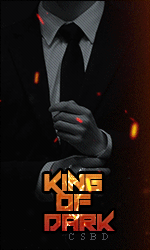☕ Eid al-Fitr ☕
Days
Hours
Minutes
Seconds
1662967864_CAPITALBRA-ONENIGHTSTAND(PROD.BYTHECRATEZDANNYEBTRACKS).mp3
00:00/00:00
- 1662967864_CAPITALBRA-ONENIGHTSTAND(PROD.BYTHECRATEZDANNYEBTRACKS).mp3
MeLiNjoooo last won the day on March 26
MeLiNjoooo had the most liked content!
About MeLiNjoooo
- Birthday 03/02/2002
Title
-
*~The KiNg Is HeRe~*
Contact
-
Yahoo
ermalballiu88@yahoo.com
-
Skype
Ermal Balliu
-
Website URL
Ermalballiu.com
-
Twiter
Ermal.Balliu
-
Instagram
its.ermal
-
YouTube
Ermal Balliu
Informations
-
Steam
Its.ermal
-
Gender
Male
-
Interests
-
-
City
*-Pogradec-Starov-*
Recent Profile Visitors
15,898 profile views
MeLiNjoooo's Achievements
-
Voted
-
MeLiNjoooo started following "HaMsIK"
-
MeLiNjoooo started following Cyberpsycho
-
Voted
-
Voted
-
MeLiNjoooo started following VollmeR
-
¤ Nick: Capital Bra ¤ Grade: Player ¤ New Tag: The King is Back
-
MeLiNjoooo started following
 Ballantines
Ballantines
-
MeLiNjoooo started following El Máster Edwin
-
JaCks47 started following MeLiNjoooo
-
MeLiNjoooo started following Mateo
-
pIzZAaa started following MeLiNjoooo
-
Desire- started following MeLiNjoooo
-
MeLiNjoooo started following Desire-
-
Nick: Capital Bra Real name: Ermal Balliu How old are you?: 20 Which Games you play? and for how long?(each of them): Cs 1.6 und Pubg Mobile Where are you from?(country and city): Albania/Pogradec Describe yourself(at least 50 words): - Note some of your qualities: - Tell us some of your defects: no have Had you before any kind of responsabilities(describe it): - On which category/categories have you been active lately?(describe your activity): I have only visited and I have downloaded the page at the end and I have looked at the ones that are active Which category/project you want to care off?: I don't know, I just want to be with you, with all due respect How well you speak english?(and other languages): english 35% arbic 10% france 10% Do you use TS3? Do you have an active microphone?: yes For how long can you be active after you get accepted?(days, weeks, months, years): as long as possible Contact methods :- Last request: -
- 1 reply
-
- 1
-

-
WARNIGHTZM: We need 2 co-owners with experience and activity on the server, if you are interested you can talk to us: @ALEJANDROPlay, @-Dark @[M]anuel
-
Happy birthday !!
-
Software is a collection of instructions that tell a computer how to work.[1][2] This is in contrast to hardware, from which the system is built and actually performs the work. At the lowest programming level, executable code consists of machine language instructions supported by an individual processor—typically a central processing unit (CPU) or a graphics processing unit (GPU). Machine language consists of groups of binary values signifying processor instructions that change the state of the computer from its preceding state. For example, an instruction may change the value stored in a particular storage location in the computer—an effect that is not directly observable to the user. An instruction may also invoke one of many input or output operations, for example displaying some text on a computer screen; causing state changes which should be visible to the user. The processor executes the instructions in the order they are provided, unless it is instructed to "jump" to a different instruction, or is interrupted by the operating system. As of 2015, most personal computers, smartphone devices and servers have processors with multiple execution units or multiple processors performing computation together, and computing has become a much more concurrent activity than in the past. The majority of software is written in high-level programming languages. They are easier and more efficient for programmers because they are closer to natural languages than machine languages.[3] High-level languages are translated into machine language using a compiler or an interpreter or a combination of the two. Software may also be written in a low-level assembly language, which has a strong correspondence to the computer's machine language instructions and is translated into machine language using an assembler. Contents 1History 2Types 2.1Purpose, or domain of use 2.2Nature or domain of execution 2.3Programming tools 3Topics 3.1Architecture 3.2Executionpammi 3.3Quality and reliability 3.4License 3.5Patents 4Design and implementation 5See also 6References 6.1Sources 7External links History Main article: History of software An algorithm for what would have been the first piece of software was written by Ada Lovelace in the 19th century, for the planned Analytical Engine.[4] She created proofs to show how the engine would calculate Bernoulli numbers.[4] Because of the proofs and the algorithm, she is considered the first computer programmer.[5][6] The first theory about software, prior to the creation of computers as we know them today, was proposed by Alan Turing in his 1935 essay, On Computable Numbers, with an Application to the Entscheidungsproblem (decision problem).[citation needed] This eventually led to the creation of the academic fields of computer science and software engineering; both fields study software and its creation.[citation needed] Computer science is the theoretical study of computer and software (Turing's essay is an example of computer science), whereas software engineering is the application of engineering principles to development of software.[citation needed] Prior to 1946, software was not yet the programs stored in the memory of stored-program digital computers, as we now understand it; the first electronic computing devices were instead rewired in order to "reprogram" them.[citation needed] In 2000, Fred Shapiro, a librarian at the Yale Law School, published a letter revealing that John Wilder Tukey's 1958 paper "The Teaching of Concrete Mathematics"[7][8] contained the earliest known usage of the term "software" found in a search of JSTOR's electronic archives, predating the OED's citation by two years.[9] This led many to credit Tukey with coining the term, particularly in obituaries published that same year,[10] although Tukey never claimed credit for any such coinage. In 1995, Paul Niquette claimed he had originally coined the term in October 1953, although he could not find any documents supporting his claim.[11] The earliest known publication of the term "software" in an engineering context was in August 1953 by Richard R. Carhart, in a Rand Corporation Research Memorandum.[12] https://en.wikipedia.org/wiki/Software
-
Motorola, Inc. (/ˌmoʊtəˈroʊlə/[4]) was an American multinational telecommunications company based in Schaumburg, Illinois, United States. After having lost $4.3 billion from 2007 to 2009, the company split into two independent public companies, Motorola Mobility and Motorola Solutions on January 4, 2011.[5] Motorola Solutions is generally considered to be the direct successor to Motorola, Inc., as the reorganization was structured with Motorola Mobility being spun off.[6] Motorola Mobility was acquired by Lenovo in 2014. Motorola designed and sold wireless network equipment such as cellular transmission base stations and signal amplifiers. Motorola's home and broadcast network products included set-top boxes, digital video recorders, and network equipment used to enable video broadcasting, computer telephony, and high-definition television. Its business and government customers consisted mainly of wireless voice and broadband systems (used to build private networks), and, public safety communications systems like Astro and Dimetra. These businesses (except for set-top boxes and cable modems) are now part of Motorola Solutions. Google sold Motorola Home (the former General Instrument cable businesses) to the Arris Group in December 2012 for US$2.35 billion.[7] Motorola's wireless telephone handset division was a pioneer in cellular telephones. Also known as the Personal Communication Sector (PCS) prior to 2004, it pioneered the "mobile phone" with DynaTAC, "flip phone" with the MicroTAC as well as the "clam phone" with the StarTAC in the mid-1990s. It had staged a resurgence by the mid-2000s with the RAZR, but lost market share in the second half of that decade. Later it focused on smartphones using Google's open-source Android mobile operating system. The first phone to use the newest version of Google's open source OS, Android 2.0, was released on November 2, 2009 as the Motorola Droid (the GSM version launched a month later, in Europe, as the Motorola Milestone). The handset division (along with cable set-top boxes and cable modems) was later spun off into the independent Motorola Mobility. On May 22, 2012, Google CEO Larry Page announced that Google had closed on its deal to acquire Motorola Mobility.[8] On January 29, 2014, Google CEO Larry Page announced that pending closure of the deal, Motorola Mobility would be acquired by Chinese technology company Lenovo for US$2.91 billion (subject to certain adjustments).[9] On October 30, 2014, Lenovo finalized its purchase of Motorola Mobility from Google.[10] Motorola started in Chicago, Illinois, as Galvin Manufacturing Corporation (at 847 West Harrison Street)[11] in 1928 when brothers, Paul V. and Joseph E. Galvin,[12][13] purchased the bankrupt Stewart Battery Company's battery-eliminator plans and manufacturing equipment at auction for $750. Galvin Manufacturing Corporation set up shop in a small section of a rented building. The company had $565 in working capital and five employees. The first week's payroll was $63. The company's first products were battery-eliminators, devices that enabled battery-powered radios to operate on household electricity. Due to advances in radio technology, battery-eliminators soon became obsolete. Paul Galvin learned that some radio technicians were installing sets in cars, and challenged his engineers to design an inexpensive car radio that could be installed in most vehicles. His team was successful, and Galvin was able to demonstrate a working model of the radio at the June 1930 Radio Manufacturers Association convention in Atlantic City, New Jersey. He brought home enough orders to keep the company in business. Paul Galvin wanted a brand name for Galvin Manufacturing Corporation's new car radio, and created the name “Motorola” by linking "motor" (for motorcar) with "ola" (from Victrola), which was also a po[CENSORED]r ending for many companies at the time, e.g. Moviola, Crayola.[14] The company sold its first Motorola branded radio on June 23, 1930, to H.C. Wall of Fort Wayne, Indiana, for $30. The Motorola brand name became so well known that Galvin Manufacturing Corporation later changed its name to Motorola, Inc.[15][16] Galvin Manufacturing Corporation began selling Motorola car-radio receivers to police departments and municipalities in November 1930. The company's first public safety customers (all in the U.S. state of Illinois) included the Village of River Forest, Village of Bellwood Police Department, City of Evanston Police, Illinois State Highway Police, and Cook County (Chicago area) Police.[17] Many of Motorola's products have been radio-related, starting with a battery eliminator for radios, through the first hand-held walkie-talkie in the world in 1940,[18] defense electronics, cellular infrastructure equipment, and mobile phone manufacturing. In the same year, the company built its research and development program with Dan Noble, a pioneer in FM radio and semiconductor technologies, who joined the company as director of research. The company produced the hand-held AM SCR-536 radio during World War II, which was vital to Allied communication. Motorola ranked 94th among United States corporations in the value of World War II military production contracts.[19] Motorola went public in 1943,[20] and became Motorola, Inc. in 1947. At that time Motorola's main business was producing and selling televisions and radios. https://en.wikipedia.org/wiki/Motorola
-
Happy birthday
-
Nick: @Capital Bra Real name: Ermal Balliu How old are you?: 18 Which Games you play? and for how long?(each of them): I play Counter Strike 1.6 and Pubg Mobile Where are you from?(country and city): I am from Albania . POGRADEC Describe yourself(at least 50 words): I am an excellent person with everyone, I treat everyone the same. I love to play and enjoy the things that I do. I love playing soccer, playing video games and many things. I also like to work and I feel that I am super organized in my work Note some of your qualities: I am responsible in everything that is entrusted to me, I like the limits of doing more and learning more every day Tell us some of your defects: I am a bit closed when something is new to me, I ask a lot to avoid problems in it. Had you before any kind of responsabilities(describe it): Currently within the forum I have 2 responsibilities. Journalist , VRG are the positions that I currently have and I work every day to improve. And I also have my own server which I dedicate a lot of time to, its name is Zmoldschool On which category/categories have you been active lately?(describe your activity): I am currently active on VRG , Journalist, and as I said earlier on my server. Which category/project you want to care off?: I want to take care of my server since a lot of work and time has to be dedicated to it every day. Like a Journalist Category. I feel that you can get more out of that project and improve it so that many more people like it. How well you speak english?(and other languages): Currently, if I rate myself, my level of English is 8/10 since it is still difficult for me to listen and write when they speak it. But I am good at reading English. Do you use TS3? Do you have an active microphone?: If I have ts3 I am very active in it. And I also have a microphone. For how long can you be active after you get accepted?(days, weeks, months, years): I can be active daily and probably years one does not know what can be found later. Contact methods: Facebook, WhatsApp and Ts3 Last request: First request.
-
Volkswagen (German: [ˈfɔlksˌvaːɡn̩] (listen);[Note 1] shortened to VW [faʊˈveː] (listen)) is a German motor vehicle manufacturer headquartered in Wolfsburg, Lower Saxony, Germany. Founded in 1937 by the German Labour Front, known for their iconic Beetle, it is the flagship brand of the Volkswagen Group, the largest car maker by worldwide sales in 2016 and 2017.[2] The group's biggest market is in China, which delivers 40% of its sales and profits.[3][4] The German term Volk translates to "people", thus Volkswagen translates to "people's car". Volkswagen was established in 1937 by the German Labour Front (Deutsche Arbeitsfront) in Berlin.[5] In the early 1930s, cars were a luxury – most Germans could afford nothing more elaborate than a motorcycle and only one German out of 50 owned a car. Seeking a potential new market, some car makers began independent "people's car" projects – the Mercedes 170H, BMW 3/15, Adler AutoBahn, Steyr 55, and Hanomag 1.3L, among others. The growing trend was not nascent; Béla Barényi, a pioneering automotive engineer, is credited as already having conceived the basic design during the mid-1920s. Josef Ganz developed the Standard Superior (going as far as advertising it as the "German Volkswagen"). In Germany, the company Hanomag mass-produced the 2/10 PS "Kommissbrot", a small, cheap rear-engined car, from 1925 to 1928.[6] Also, in Czechoslovakia, the Hans Ledwinka's penned Tatra T77, a very po[CENSORED]r car amongst the German elite, was becoming smaller and more affordable at each revision. Ferdinand Porsche, a well-known designer for high-end vehicles and race cars, had been trying for years to get a manufacturer interested in a small car suitable for a family. He built a car named the "Volksauto" from the ground up in 1933, using many po[CENSORED]r ideas and several of his own, putting together a car with an air-cooled rear engine, torsion bar suspension, and a "beetle" shape, the front bonnet rounded for better aerodynamics (necessary as it had a small engine).[7] VW logo during the 1930s, initials surrounded by a stylised cogwheel and a spinning propeller that looked like a swastika[8] In 1934, with many of the above projects still in development or early stages of production, Adolf Hitler became involved, ordering the production of a basic vehicle capable of transporting two adults and three children at 100 km/h (62 mph). He wanted a car every German family would be able to afford.[7] The "People's Car" would be available through a savings plan at RM990 (US$396 in 1938)—about the price of a small motorcycle (the average income being around RM32 a week).[9][10] It soon became apparent that private industry could not turn out a car for only RM990. Thus, Hitler chose to sponsor an all-new, state-owned factory using Ferdinand Porsche's design (with some of Hitler's design suggestions, including an air-cooled engine so nothing could freeze). The intention was that German families could buy the car through a savings scheme ("Fünf Mark die Woche musst du sparen, willst du im eigenen Wagen fahren" – "Five Marks a week you must set aside, if in your own car you wish to ride"), which around 336,000 people eventually paid into.[11] However, the project was not commercially viable, and only government support was able to keep it afloat.[12][Note 2] Prototypes of the car called the "KdF-Wagen" (German: Kraft durch Freude – "Strength through Joy") appeared from 1938 onwards (the first cars had been produced in Stuttgart). The car already had its distinctive round shape and air-cooled, flat-four, rear-mounted engine. The VW car was just one of many KdF programs, which included things such as tours and outings. The prefix Volks— ("People's") was not just applied to cars, but also to other products in Germany; the "Volksempfänger" radio receiver for instance. On 28 May 1937, Gesellschaft zur Vorbereitung des Deutschen Volkswagens mbH ("Company for the Preparation of the German Volkswagen Ltd."), or Gezuvor[13] for short, was established by the Deutsche Arbeitsfront in Berlin. More than a year later, on 16 September 1938, it was renamed to Volkswagenwerk GmbH.[14][15] VW Type 82E Erwin Komenda, the longstanding Auto Union chief designer, part of Ferdinand Porsche's hand-picked team,[7] developed the car body of the prototype, which was recognisably the Beetle known today. It was one of the first cars designed with the aid of a wind tunnel—a method used for German aircraft design since the early 1920s. The car designs were put through rigorous tests and achieved a record-breaking million miles of testing before being deemed finished. The construction of the new factory started in May 1938 in the new town of "Stadt des KdF-Wagens" (renamed Wolfsburg after the war), which had been purpose-built for the factory workers.[14] This factory had only produced a handful of cars by the time war started in 1939. None were actually delivered to any holder of the completed saving stamp books, though one Type 1 Cabriolet was presented to Hitler on 20 April 1944 (his 55th birthday).[14] 1939–1944: Wartime production and concentration camp labour[edit] War changed production to military vehicles—the Type 82 Kübelwagen ("Bucket car") utility vehicle (VW's most common wartime model), and the amphibious Schwimmwagen—manufactured for German forces. One of the first foreigners to drive a Volkswagen was the American war correspondent Ernie Pyle, who had the use of a captured Volkswagen for a few days after the Allied victory in Tunisia in May 1943.[16] As was common with much of the production in Nazi Germany during the war, slave labour was utilised in the Volkswagen plant, e.g. from Arbeitsdorf concentration camp. The company would admit in 1998 that it used 15,000 slaves during the war effort. German historians estimated that 80% of Volkswagen's wartime workforce was slave labour.[17] Many of the slaves were reported to have been supplied from the concentration camps upon request from plant managers. A lawsuit was filed in 1998 by survivors for restitution for the forced labour.[18] Volkswagen would set up a voluntary restitution fund.[19] 1945–1948: British Army intervention[edit] Volkswagen industrial plant in Wolfsburg, pictured in 2006 In April 1945, KdF-Stadt and its heavily bombed factory were captured by the United States armed forces and subsequently handed over to the British, within whose occupation zone the town and factory fell. The factory was placed under the control of British Army officer Major Ivan Hirst, REME, a civilian Military Governor with the occupying forces. At first, one plan was to use it for military vehicle maintenance, and possibly dismantle and ship it to Britain. Since it had been used for military production, (though not of KdF-Wagens) and had been in Hirst's words, a "political animal" rather than a commercial enterprise[citation needed] – technically making it liable for destruction under the terms of the Potsdam Agreement – the equipment could have been salvaged as war reparations.[citation needed] Allied dismantling policy changed in late 1946 to mid-1947, though heavy industry continued to be dismantled until 1951.[citation needed] One of the factory's wartime 'KdF-Wagen' cars had been taken to the factory for repairs and abandoned there. Hirst had it repainted green and demonstrated it to British Army headquarters. Short of light transport, in September 1945 the British Army was persuaded to place a vital order for 20,000 cars. However, production facilities had been massively disrupted, there was a refugee crisis at and around the factory, and some parts (such as carburettors) were unavailable. Hirst and his German assistant Heinrich Nordhoff (who went on to run the Wolfsburg facility after the military government ended in 1949) helped to stabilise the acute social situation while simultaneously re-establishing production. Hirst, for example, used his engineering experience to arrange the manufacture of carburettors, the original producers being effectively 'lost' in the Soviet zone.[20] The first few hundred cars went to personnel from the occupying forces, and to the German Post Office. Some British Service personnel were allowed to take their Beetles back to the United Kingdom when they were demobilised.[21][better source needed] In 1986, Hirst said that factory workers were, after many years of Nazi conditioning, initially reluctant to follow his orders; to counter this, he had his military uniform brought back from Britain and wore it in the factory, after which he reported having no problems even though he was no longer a soldier at the time but a civilian member of the military government.[citation needed] The post-war industrial plans for Germany set out rules that governed which industries Germany was allowed to retain. These rules set German car production at a maximum of 10% of 1936 car production.[22] By 1946, the factory produced 1,000 cars a month even though it was still in disrepair. Owing to roof and window damage, production had to stop when it rained, and the company had to barter new vehicles for steel for production.[23] The car and its town changed their Second World War-era names to "Volkswagen" and "Wolfsburg" respectively, and production increased. It was still unclear what was to become of the factory. It was offered to representatives from the American, Australian, British, and French motor industries who all rejected it. After an inspection of the plant, Sir William Rootes, head of the British Rootes Group, told Hirst the project would fail within two years, and that the car "...is quite unattractive to the average motorcar buyer, is too ugly and too noisy ... If you think you're going to build cars in this place, you're a bloody fool, young man."[citation needed] The official report said: "To build the car commercially would be a completely uneconomic enterprise."[24] Ford representatives were equally critical. In March 1948, the British offered the Volkswagen company to Ford, free of charge. Henry Ford II, the son of Edsel Ford, traveled to West Germany for discussions. Heinz Nordhoff was also present, as well as Ernest Breech, chairman of the board for Ford. Henry Ford II looked to Breech for his opinion, and Breech said, "Mr. Ford, I don't think what we're being offered here is worth a damn!"[25] Ford passed on the offer, leaving Volkswagen to rebuild itself under Nordhoff's leadership.[citation needed] https://en.wikipedia.org/wiki/Volkswagen


















